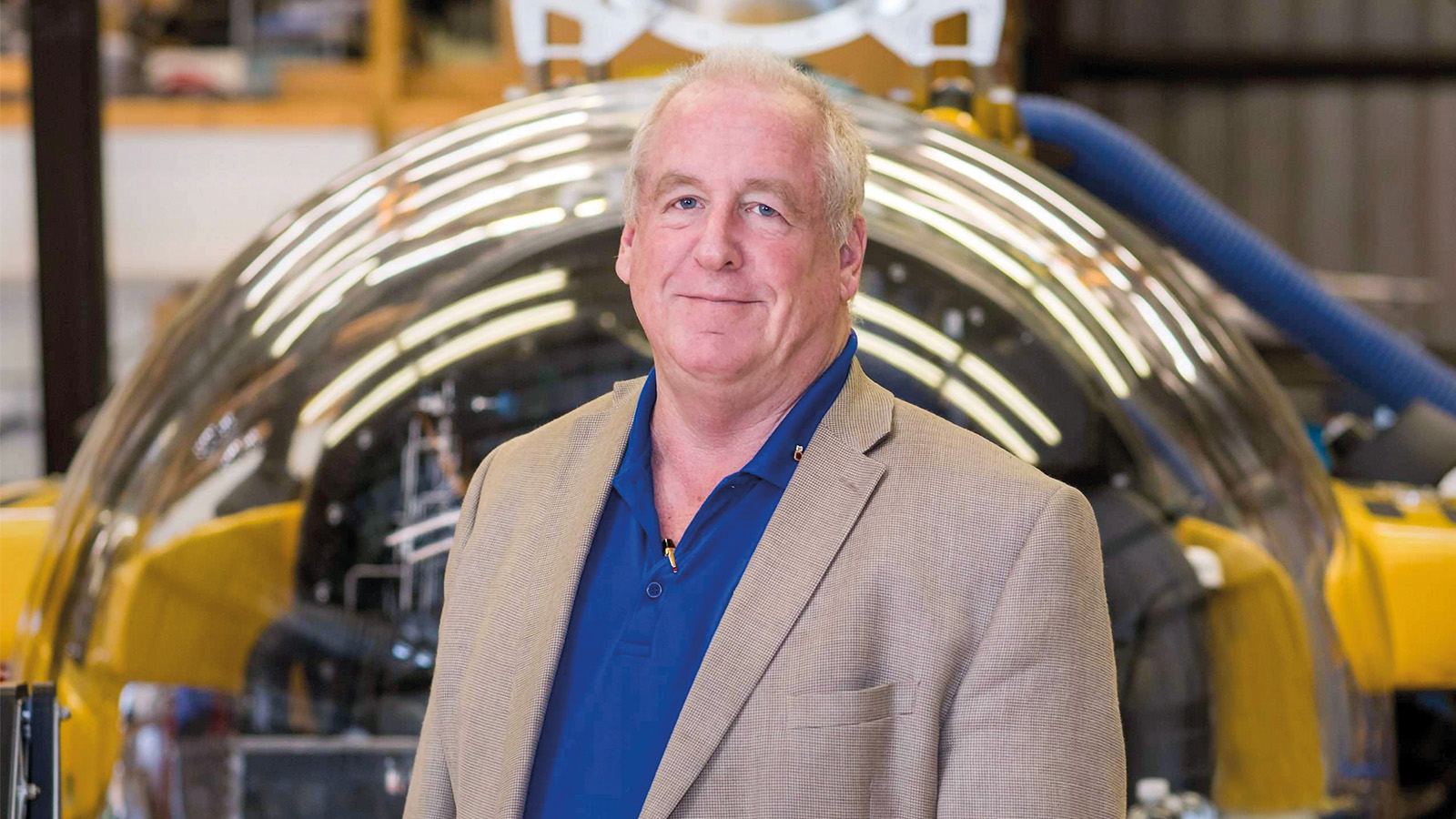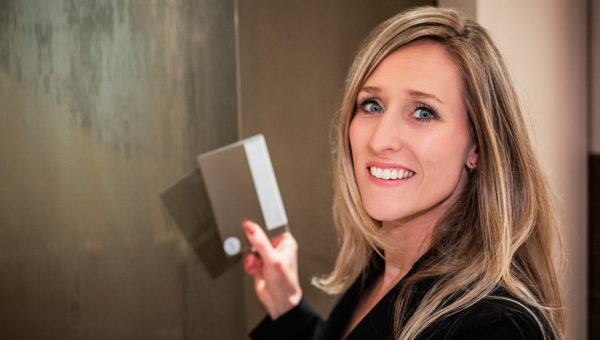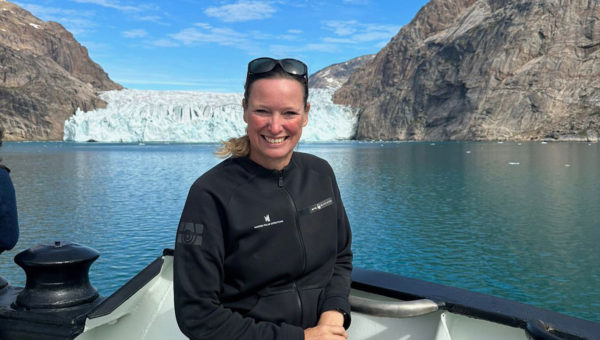Exploring inner space
Your guide to underwater living – Legendary underwater cities like Atlantis have captured the imagination for centuries, but could they ever move beyond the realms of fiction? We asked the founder of Triton Submarines.
If there is one common characteristic among those in the superyacht industry, it is a love of the ocean. Whether crossing from coast to coast by yacht, racing across the surface on a jet ski, or diving the depths in a submarine, the urge to immerse ourselves in the world of the oceans seems to be almost universal.
But what about actually living there? L Bruce Jones has recently retired as CEO of Triton Submarines and now spearheads numerous technological projects, including a forthcoming venture, Singapore-based Undersealiving, which plans to build fully submerged residences and resorts.
This new company harnesses Jones’s expert knowledge of what it takes to build the ultimate, resilient underwater residences – Triton, after all, built the first and so far only manned submarine capable of reaching the deepest point of the world’s oceans, 11,000 metres down. Excitingly, as Bruce explains, these residences are not the stuff of crystal balls and pie-in-the-sky thinking: “The technology already exists, and certainly the novelty of being able to exist underwater is pretty terrific. You get to see and experience things that no one has ever seen or experienced before. Personally speaking, I find being underwater to be an incredibly peaceful, relaxing experience, and I think most people would agree,” he says. “From that perspective, I think there is definitely a market for these undersea resorts and private residences – maybe even some high-end commercial space that can warrant the initial capital expenditure. As an important distinction, however, as far as wholesale cities or towns are concerned, such as Jacques Cousteau’s Conshelf villages in the 1960s, I just don’t see that happening in the near future.”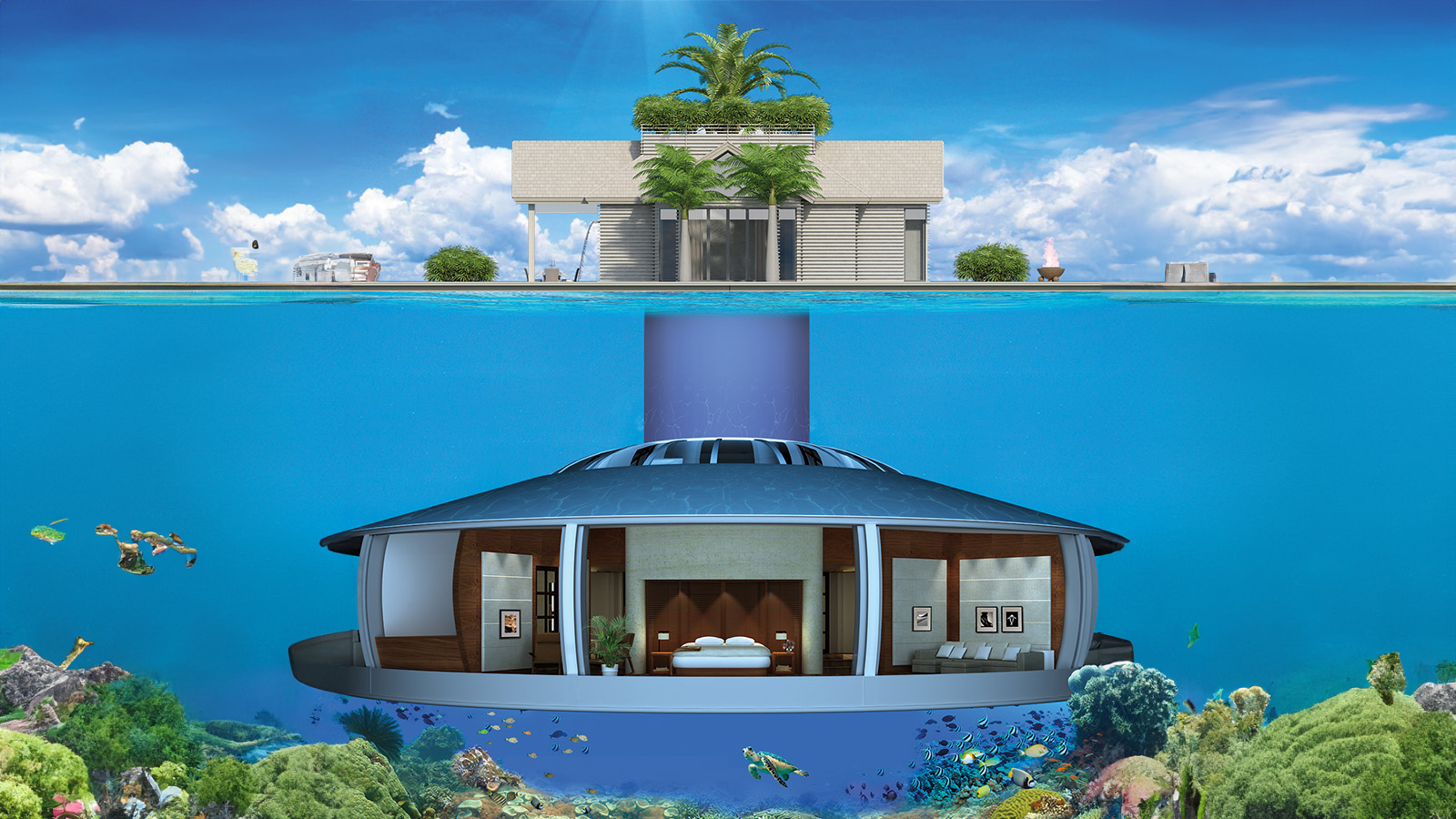
In terms of practicalities, there are many locations around where these undersea resorts could be brought to life, as Bruce highlights: “It all depends on where someone would like to build the first one. For the early ones, you want to be in a protected area so that you are not subject to the full intensity of the weather and storms. But there are lots of possibilities – whether that is the Florida Keys, or natural lagoons in the South Pacific.”
And what about the environmental impact? Bruce and his colleagues have thought of that. “The concept is designed to be totally innocuous environmentally. The houses would all be fully certified as such by the authorities before we build them. You are not discharging sewage into the oceans and there are no diesel fuels involved at any stage. In terms of getting them onto the sea floor, what we do is put attachments of pilings onto them, and cut the piling off, then the whole structure is cantilevered over the sea floor, about a metre or so off, so that it doesn’t do any damage to the environment.”
As for getting to your underwater house, it’s a breeze, according to Bruce: “We would build a pier out to where you’ve got 50 or 60 feet of water (15 to 18m). You have a platform beside the pier, and you walk from the pier right onto the surface platform, open a door, get in, and take the elevator down – with a spiral staircase system in case of emergencies. You would remain fully connected to land for all the essentials – the homes are powered by electricity coming from land, you pump all of your sewage back to shore, you have fresh water, and so on.”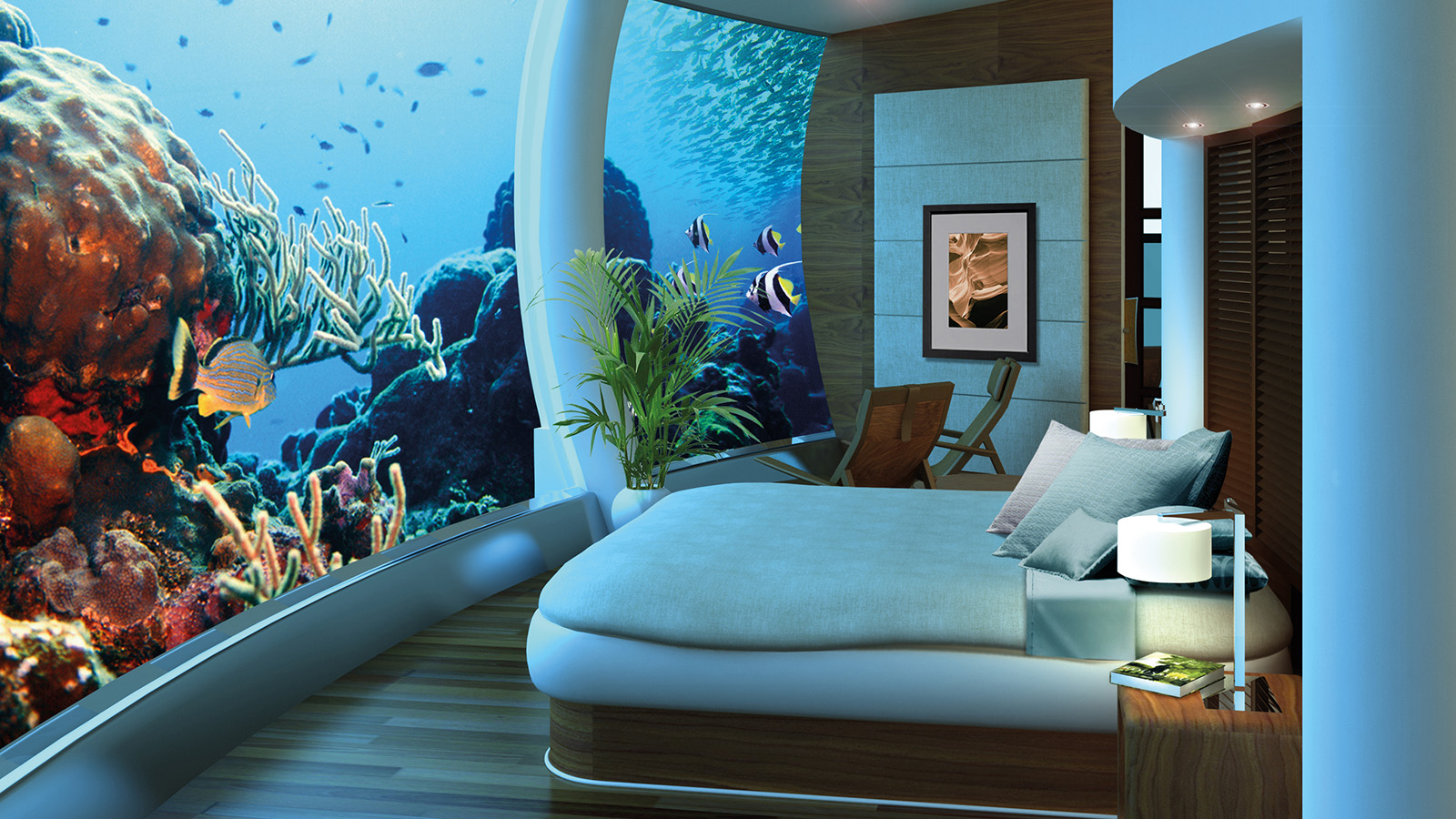
Naturally, building residences under water comes with various structural considerations, but perhaps not as many as you might think. Compared to the difficulties involved in building submarines to withstand pressures at the bottom of the ocean, for Bruce and team, these residences are simple, as he explains: “An important point to realise is that these structures will be one atmosphere. This means they are at surface pressure, irrespective of the depth of emplacement. As a result, there are no physiological ramifications to your body as a result of being down there.”
Obviously, the underwater environment will also have an impact on the design of these residences, as Bruce highlights. “The external structure is sort of like a pie tin, which is a structural requirement in order for the buildings to successfully withstand the hydrostatic pressure, and it also offers those inside an amazing 360-degree view.”
Where the interior is concerned, there is far more room for owners to put their own stamp on the residences: “The interior can be pretty much whatever you want it to be. We have a 3,600 square foot unit (335m2) with three bedrooms on two levels – and you can have more bedrooms if you want. It’s pretty luxurious.”
Current yacht owners may also opt to coordinate their new residences with the style of their current vessels, as Bruce himself is planning to do. “My boat, for example, is a contemporary vessel with a beautiful, high-gloss cherry interior. I like this kind of traditional boat, so when I build the first residence myself, it is going to be in the same style.”
Twelve million dollars
So with the technology in place, what is it that is currently separating us from these exciting underwater opportunities? Firstly, the capital investment, and, secondly, the willingness to be a guinea pig.
Bruce explains further: “It is a really simple thing to build once you are familiar with the technology. In terms of costs, we would be able to build one for $12 million or a much bigger one for $20 million, and it could be finished in around a year. In terms of a market, there is no existing, easy market for it, as no one has seen it done before, so they can’t imagine it. But once they’ve seen it done, they might think, ‘Oh, I’d like to have one of these!”
And what better way to provide proof of the concept than to build one for himself? “I will fund the first one myself with some business people I know. We’ll set it up where you can lease or charter it for around $125,000 a week – which is absolutely comparable to the price of chartering a yacht – and this is a one-of-a-kind experience. People will come, and if they enjoy the experience, they may want us to build one for them. This is the best way I can think of to prove the concept – we’ll just have to see what the future holds and which owners are up for being trailblazers under the sea!
Words by Georgia Tindale
Share
COME AND MEET US: YOU’RE INVITED!
Headquarters
Ruud van der Stroom Chief Commercial Officer
| Robert Drontmann Sales Director
| Eckly Hendriks Sales Manager
Sara Gioanola PR & Press Office Manager
Heesen Yachts Agents
Thom Conboy Agent North-America, Mexico, Bahama's & Caribbean
| Hisham Abushakra Agent for the Middle East region

